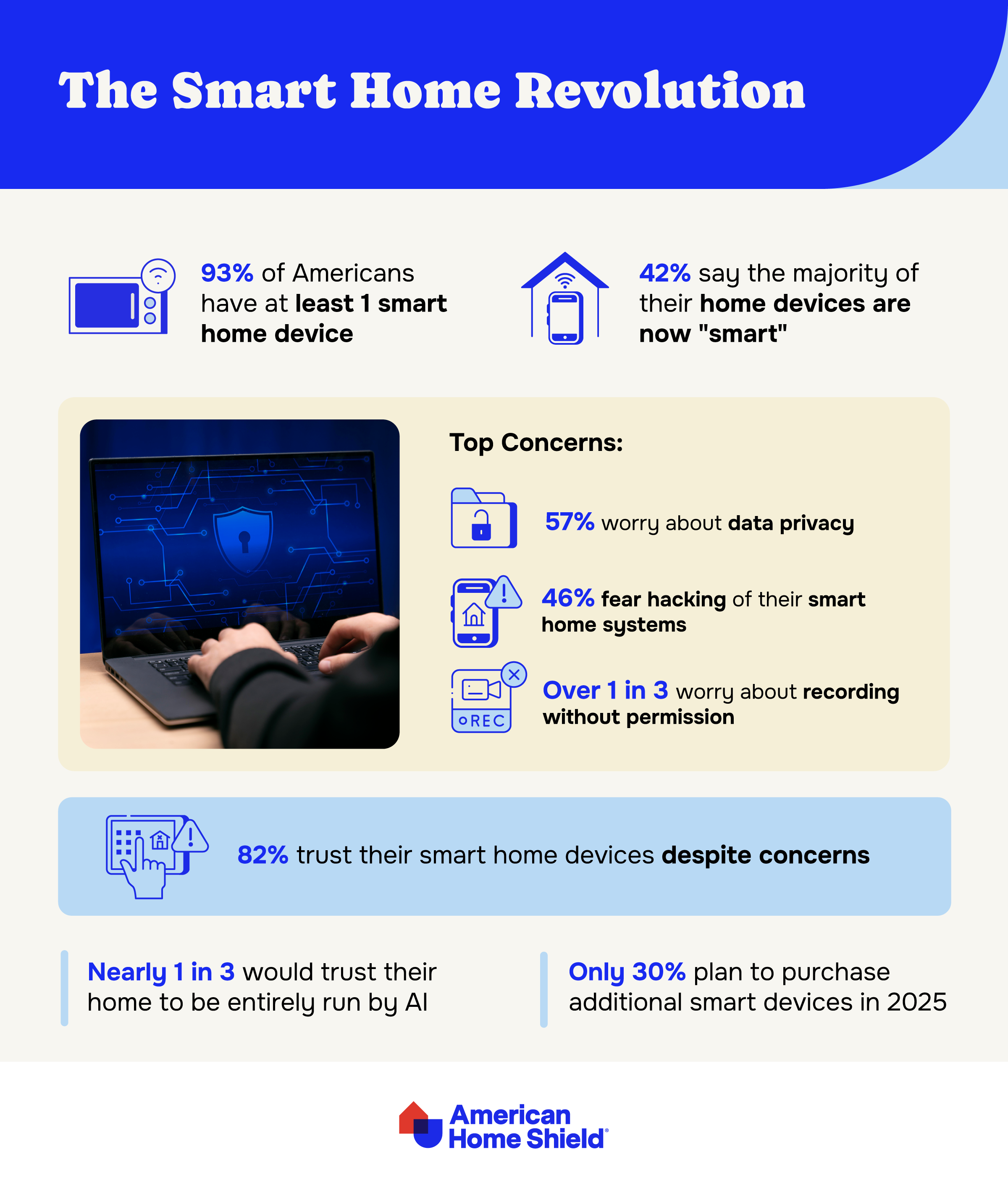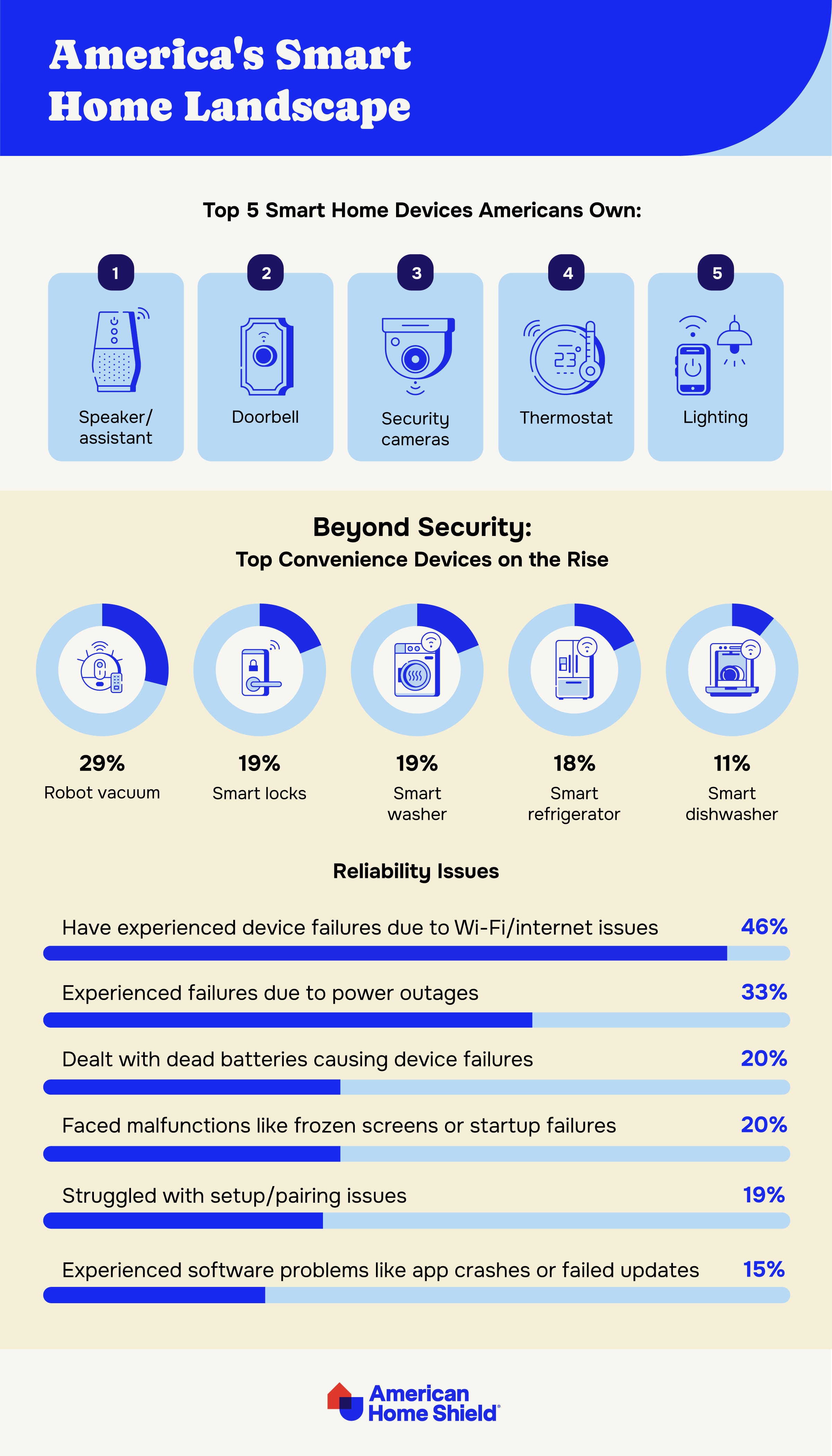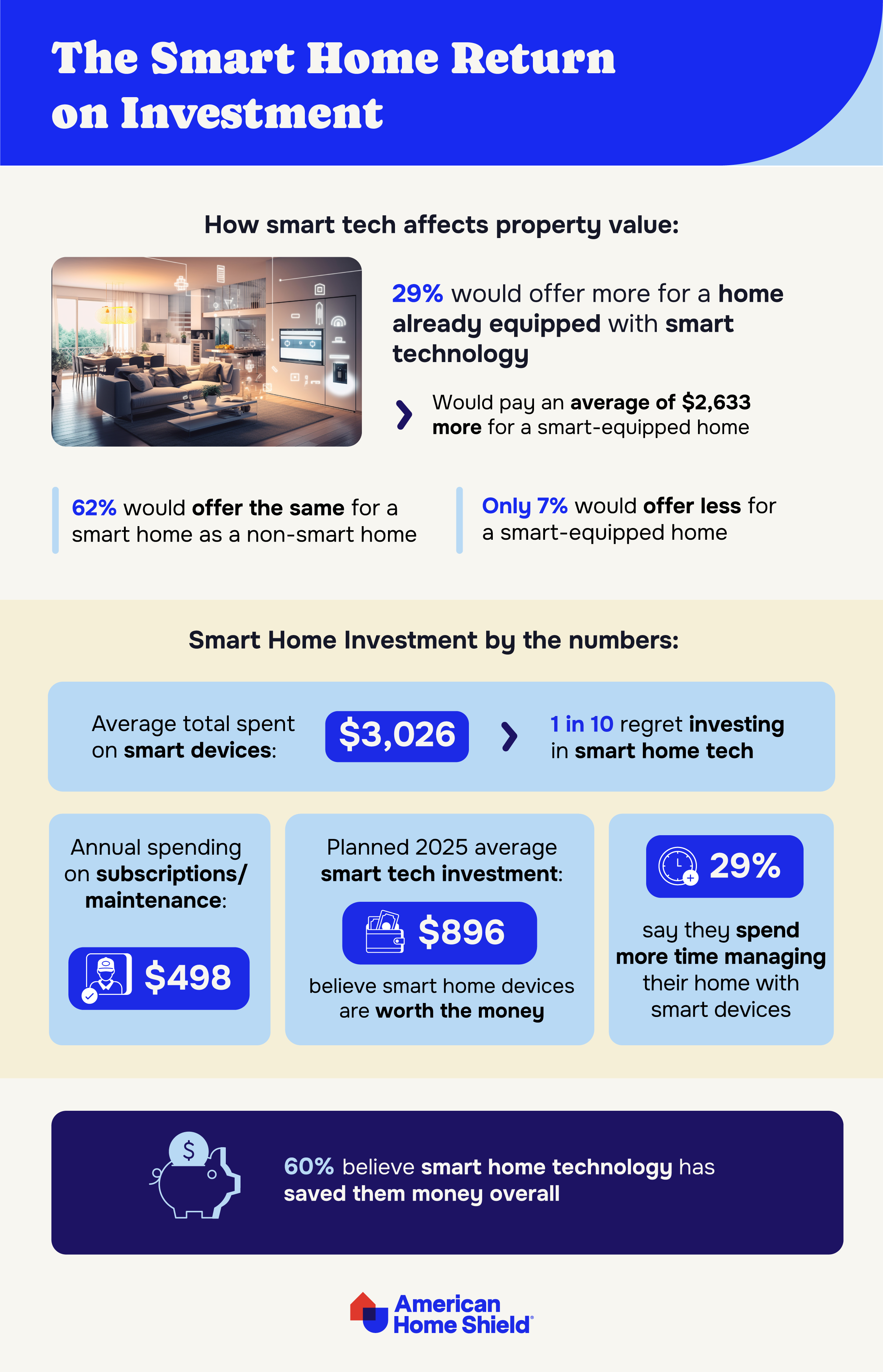Keeping Your Smart Home Systems Smart
Maintaining smart home security gadgets is made easy with an American Home Shield plan.
Home technology has evolved dramatically over the past decade, with smart devices becoming increasingly commonplace in American households. From voice assistants to security systems, these technologies promise convenience, security, and efficiency – but do they deliver? And at what cost?

To understand how Americans are embracing smart home technology, we surveyed 1,006 homeowners and renters across the U.S. in December 2024. We asked about current device ownership, concerns, reliability issues, and financial investments in smart home technology. 50% were women, 50% were men, and ages ranged from 18-75 with an average age of 46. All conclusions in this article are drawn from answers to this survey.
The numbers tell a clear story: smart home technology has firmly established itself in American households. A remarkable 93% of Americans now own at least one smart home device, and 42% report that the majority of their home devices are now "smart," – indicating we've reached a tipping point in home technology adoption.

Despite this widespread adoption, concerns persist. Data privacy tops the list of worries, with 57% of Americans expressing concern about how their information is collected and used. Security vulnerabilities aren't far behind – 46% fear potential hacking of their smart home systems, while over 1 in 3 worry about devices recording without permission.
Interestingly, these concerns don't appear to significantly impact trust. A substantial 82% of Americans trust their smart home devices. This trust extends further for some, with nearly 1 in 3 respondents saying they would trust their home to be entirely run by AI.
However, the smart home market may be approaching saturation, as only 30% of Americans plan to purchase additional smart devices in 2025. This could indicate either satisfaction with current technology or hesitation about further investment.
When it comes to specific technologies, certain devices have achieved mainstream status while others remain in the early adoption phase. The top 5 smart home devices Americans own are:
While security and environmental control lead adoption, convenience-focused devices are steadily gaining ground. Robot vacuums are in 29% of smart homes, while smart locks and smart washers are each found in 19% of households. Smart refrigerators aren't far behind at 18%, and smart dishwashers have made their way into 11% of American homes equipped with smart technology.

The smart home experience isn't without frustrations. Reliability issues remain a significant pain point, with nearly half of users experiencing device failures. Wi-Fi and internet connectivity problems are the most common culprits, affecting 46% of smart home device owners. Power outages have disrupted smart home systems for 33% of users, while 20% have dealt with dead batteries causing device failures, and another 20% faced malfunctions like frozen screens or startup failures. Setup and pairing difficulties plague 19% of smart home users, and 15% have experienced software problems such as app crashes or failed updates.
Thinking about coverage?
Security for your home. Protection for your budget.
Beyond convenience, many homeowners wonder if smart technology adds tangible value to their property. Our survey reveals a mixed but generally positive outlook:

The financial investment in smart home technology is substantial. Americans have spent an average total of $3,026 on smart devices, though 1 in 10 regret this investment. The ongoing costs are also significant, with annual spending on subscriptions and maintenance averaging $498.
Looking ahead, those planning to expand their smart home ecosystem anticipate spending an average of $896 on smart technology in 2025. Despite the costs, 88% believe smart home devices are worth the money, and 60% believe the technology has saved them money overall, likely through energy efficiency and other cost-saving benefits.
There is one surprising drawback: 29% say they actually spend more time managing their home with smart devices than they did before. This suggests that while these technologies can simplify certain tasks, they may add complexity in other areas.
As smart home technology continues to evolve, consumers must weigh convenience against privacy and reliability concerns. Start with devices that address your specific needs – whether that's security, energy management, or convenience – and expand your ecosystem thoughtfully.
For those concerned about privacy, research each device's data collection policies and look for options that keep information processing local rather than cloud-based when possible. And remember that a truly "smart" home should make life simpler, not more complicated. Adding a home warranty can complement your smart devices by providing budget protection for the appliances and home systems you rely on most.
Want more guidance on smart home technology? Check out our comprehensive resources on the following:
When using this data and research, please attribute by linking to this study and citing AHS.com.
Maintaining smart home security gadgets is made easy with an American Home Shield plan.

AHS assumes no responsibility, and specifically disclaims all liability, for your use of any and all information contained herein.
Have a plan for your home when things don't go according to plan
Shop Home Warranties